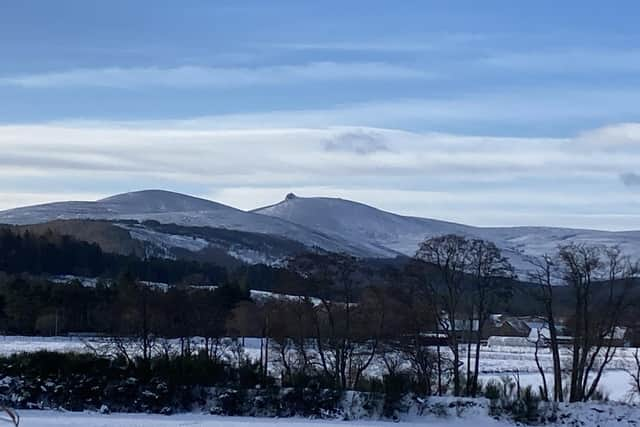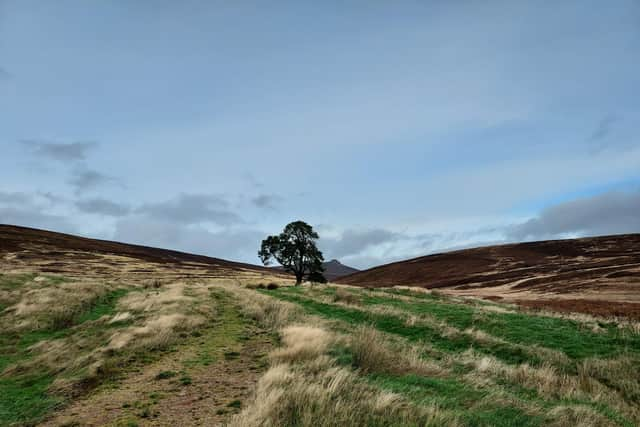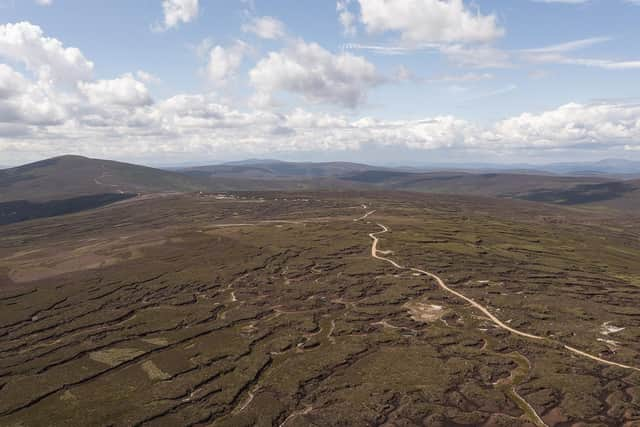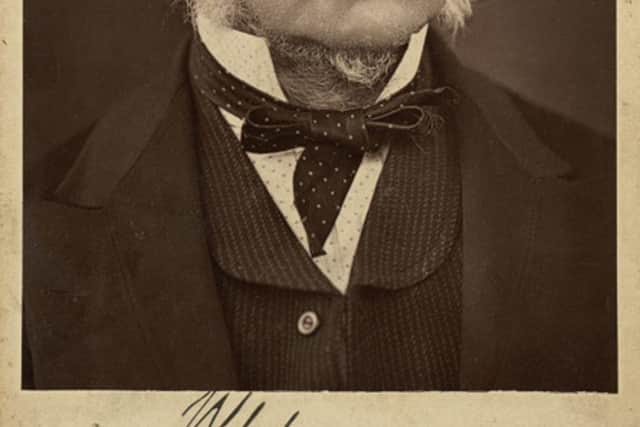Former prime minister's shooting estate to become Scotland's largest carbon-offsetting scheme after Aviva-linked purchase
A former prime minister’s shooting estate in Aberdeenshire is set to become Scotland’s largest carbon offsetting scheme – and possibly the largest in the UK – following its purchase by an investment fund headed by insurance giant Aviva insurance.
Glen Dye sits south of Banchory and was held for several generations by the family of Liberal prime minister William Gladstone, whose great-great grandson and family still own part of the original estate and run a collection of luxe holiday cabins and cottages.
Advertisement
Hide AdAdvertisement
Hide AdFollowing its sale to an individual based in Scotland – which features the popular hill of Clachnaben in the east and Mount Battock to the west – the land was then bought up by an investment fund created by Edinburgh-based Par Equity and Aviva.


Now, around four million trees will be planted across 3,000 acres, with around a third set aside for commercial forestry.
Peatland spanning some 1,800 acres will also be restored, with its conditions described as “some of the worst you will see” given damage caused over centuries by overgrazing and some burning.
Scottish Woodland, which is managing the scheme on behalf of Aviva and Par Equity, is expected to apply for public money set aside by the Scottish Government to support woodland creation.


Neil Crookston, director north for Scottish Woodlands, said: "It is a very detailed scheme and we are looking at the whole landscape here. I don't see it as a forestry project, I see it as a landscape project. It's exciting looking across the glen and knowing what should go there, what should go here.”
The arrival of Aviva in the Scottish countryside reflects the country’s changing land use and the appeal of the country’s estates to corporate investors seeking large swathes of land to off-set their company’s own carbon emissions.
Glen Dye's shift from a high-society grouse moor to natural capital scheme also comes amid the Scottish Government’s ambitious – and unmet – tree planting targets to help it meet its own net-zero 2045 ambitions.
For walkers in Glen Dye, the experience will alter as routes through open moorland will cut through forestry in the future, with a length of the track to the summit of Clachnaben to be flanked by trees.


Advertisement
Hide AdAdvertisement
Hide AdMr Crookston said: ”There will be change for the visitor as the woodland will signal a change from the open environment. But if you are standing at the top of Clachnaben and are looking out, you will still see right across Aberdeenshire .The view point from the top won’t change.
"From a distance, there won’t be a dramatic change in the landform. It's not a very enclosed woodland and you have these pieces of cultural history through the glen that allow us to interpret the landscape."
Among them is a solitary old Scots Pine that sits by the Water of Dye with views beyond to Clachnaben.


Mr Crookston said: “Our proposal is to keep any tree planting away from the tree and to retain the view to the summit, linking the past within the future design.”
Meanwhile, an agreement over the use of Charr Bothy has been extended with the Mountain Bothies Association.
The scheme at Glen Dye comes amid concerns by land reform campaigners about the impact of natural capital schemes on rising land values in Scotland and the exclusion of local communities from opportunities presented by carbon markets.
The UK Woodland Carbon Code register verifies how much carbon each natural capital scheme will pull from the atmosphere. Every tonne generates a carbon credit that can be used to offset an organisation's emissions, as in the case of Aviva, or sold on a voluntary market. Each carbon credit is worth around £25 at present.
Scottish Woodlands estimated Glen Dye has the potential to remove 1.4 million tonnes of carbon from the atmosphere, including around 468,000 tonnes by 2040.
Advertisement
Hide AdAdvertisement
Hide AdResearch by Aberdeen-based James Hutton Institute found, even if national tree planting targets are met, it will account only for around 10 per cent of Scotland's emissions and only 1 per cent of the UK's emissions.
Feughside Community Council was unavailable for comment on the Glen Dye scheme, but Mr Crookston said the community was “generally supportive" of developments, with around 150 people attending a consultation event over three days.
Mr Crookston said: “There are certain elements in the community, more traditional parts of the community, who are concerned about the loss of grouse shooting. For those who know Glen Dye through traditional sports, it is a big change. We can’t offer them grouse shooting, but we should remember that grouse shooting had long ceased on most of the land involved before it was bought.”
Glen Dye Rifle Club and North of Scotland Gun Dog Association continue using the land to some degree. Peatland restoration courses in conjunction with Nature Scot have begun.
Mr Crookston added: "It is the worst degraded peatland that you will see. I haven't seen anything like it. Historically, there has been overgrazing by sheep and deer and an element of burning. You are talking about the impacts of previous land use over centuries, but also over time peat will naturally degrade. It goes in cycles."
The North East Mountain Trust said it "broadly” supported the plans.
David Windle, editor of the trust’s magazine, said: “I have taken people to walk from Clachnaben to Mount Battock and I refer to it as the ‘house of horrors’ walk. What a mess the place is in. You are walking six feet below the surface because the peat has been allowed to sink and erode.
"The existing area is very degraded, so it is starting from a very low point. We would have liked more natural regeneration and less planting of trees, but the overall effect will be better. I think it will be a more appealing landscape.”
Comments
Want to join the conversation? Please or to comment on this article.
